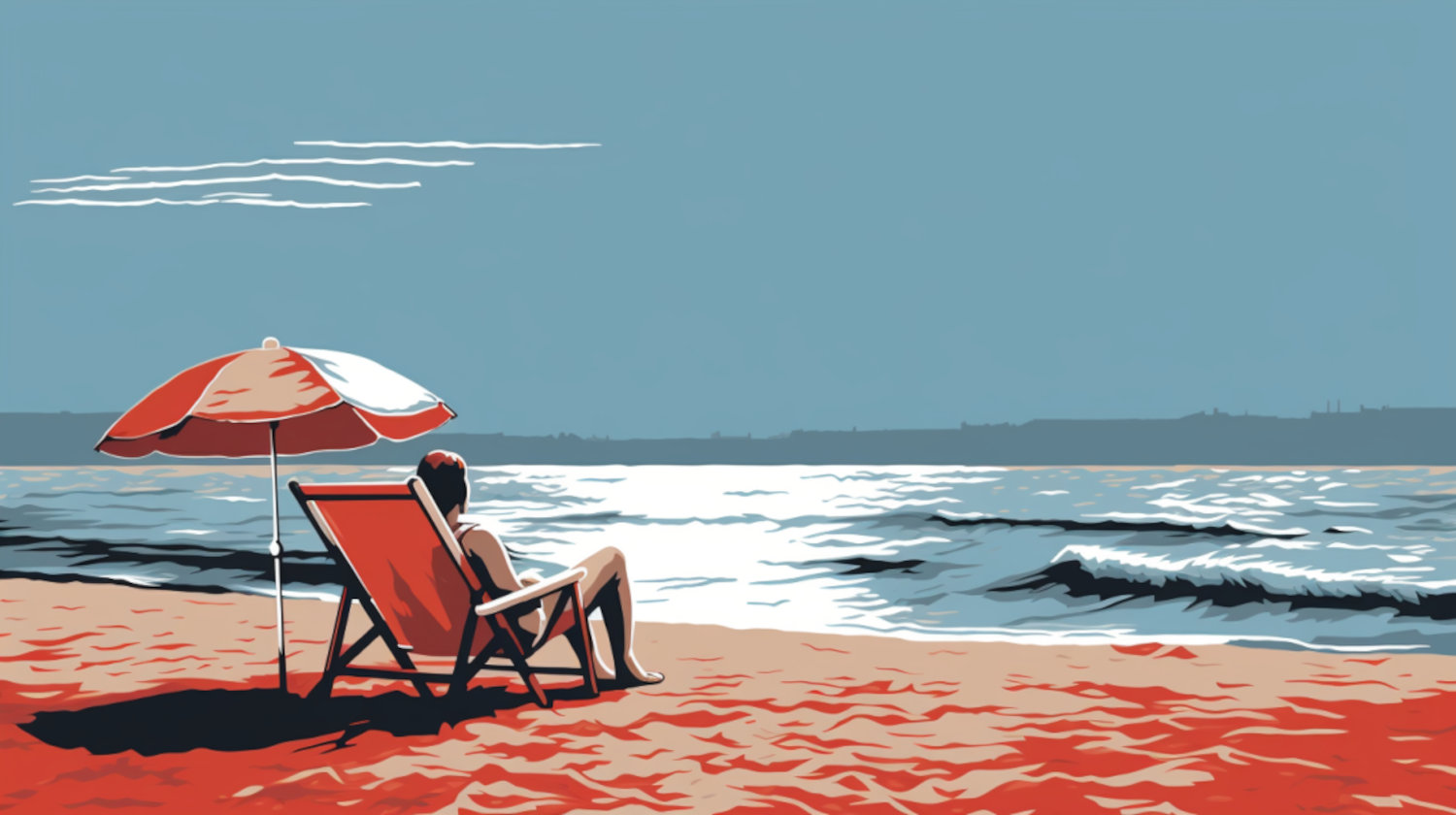Key Takeaways
- CBD is a cannabis compound, or cannabinoid, shown to help with common conditions like anxiety, pain, and inflammation.
- Though the amount of CBD in products varies widely, 5mg per day is a good place to start.
- To start, 5mg of edibles, 2-3 puffs from a vape or joint, or 1/4 dropper of a tincture is best.
CBD, or cannabidiol, is readily accessible for purchase by most adults. It’s known for its many cited benefits and is non-intoxicating.
Determining the correct dose can be tricky, depending on what is being used. However, some clear guidelines can help consumers find the appropriate dosage.
The optimal CBD dose depends on individual response, desired relief, and product concentration. However, by consulting a CBD dosage chart and understanding some basic guidelines, users can start to navigate the complexities of dosing effectively.
What is CBD?
CBD, or cannabidiol, is a naturally occurring cannabinoid found in the cannabis plant. Unlike THC, it’s non-intoxicating and widely used by both adult use and medical consumers. There are multiple ways to consume CBD, including edibles, tinctures, oils, and plant flower.
Medical research is ongoing on the therapeutic properties of CBD. However, it has been studied for how it can help manage conditions like seizure disorders (Lennox-Gastaut syndrome and Dravet syndrome) and shows promise in the treatment of anxiety, chronic pain, and neurodegenerative and inflammatory diseases.
While we’re still learning exactly how it works for certain conditions, we know it interacts with specific receptors in the body to provide relief. More specifically, CBD has a low binding affinity for CB1 and CB2 receptors, having antagonist activity, and also interacts with the 5-HT1A serotonin receptor.1
What are the Cannabinoid Concentrations in CBD Products?

CBD products come in a wide range of concentrations, from as little as 100 mg to as much as 5000 mg per unit. Because of this variation between products and brands, it's easy for users to accidentally misuse CBD if they don't follow dosing instructions carefully.
Reports of overconsumption and unwanted side effects called greening out, arise more often with products containing THC. However, over-the-counter full-spectrum CBD contains all the naturally occurring plant extracts, terpenes, and other cannabinoids, including up to 0.3% THC. Isolated CBD products taken in low or moderate doses are unlikely to cause any intoxication or paranoia.
Although consuming too much cannabis can lead to toxicity, it’s often associated with high-THC products rather than high-CBD ones. CBD is generally well-tolerated and has a favorable safety profile, but taking too much can lead to side effects such as fatigue, diarrhea, loss of appetite, and sleep disturbances.2
Following product dosage instructions or using a CBD dosage calculator can often help avoid these adverse effects. Accurately calculating the inhaled, edible, or tincture dosage and consulting with a medical cannabis doctor can prevent overuse and the resulting symptoms.
How Much CBD Should a Beginner Start With?
For first-time users, starting with a low dose of CBD is recommended to gauge how your body responds. A good starting point is 5 mg of CBD. Increase the dose by 5 mg every 2-3 days until you reach the desired effects. This gradual increase helps to avoid overdoing it and reduces the risk of potential side effects.3
New users should also consider factors such as their body weight, individual body chemistry, and the condition they aim to treat. Your optimal dose achieves symptom relief with a minimal amount of product.
Long-term users of THC products may want to take a tolerance break to reset their sensitivity and allow for a more precise evaluation of symptom mitigation.
Consulting with a medical cannabis doctor or CBD chart can provide personalized guidance to ensure you find the appropriate dose for your specific needs.
What's the Right CBD Dose for Me?

Determining the perfect dose of CBD is challenging, even for medical professionals. Finding your precise spot dosage is often more of a matter of trial and error than an exact science. Still, you can better determine your most effective dose with basic guidelines.
Before beginning any CBD protocol, it may be best to consult a physician. Your existing medical conditions, prescription medications, and overall health factor into CBD's safety and potential effectiveness for better health.
Define your medical goals and expectations for CBD. Knowing your baseline symptoms and noting any improvements will allow you to determine when you’ve reached the proper daily dose.
Your observations help identify the optimal dose by indicating when you've achieved acceptable symptom relief with no or mild tolerable side effects.
Since there is no one-size-fits-all solution, start with the lowest dose. If the lowest dose alleviates your symptoms, maintain that same dose. There is no need to increase the amount you take. More is not always better or more effective.
If the starting dose does not reduce your symptoms, follow the guidelines to titrate or increase your dosage by small amounts until you find symptom relief.
A global task force of cannabis clinicians developed dosage guidelines for CBD and THC treatment of chronic pain. The following CBD dosage chart provides guidelines for therapy.4
By beginning with a CBD-only regimen, you can experience the therapeutic effects of cannabis in a controlled and manageable way, allowing you to monitor your symptoms and adjust the dosage as needed.
If necessary, introducing THC can enhance the treatment, but starting with CBD alone helps ensure that you find a comfortable and effective baseline without the risk of intoxicating side effects.
Starter Dosage (CBD only)
| CBD dose | THC dose | How often | Titrate THC dose schedule | Amount to increase the dose | Maximum dose |
| 5 mg | 1x daily | Every 2-3 days | 10 mg | 40mg CBD |
Note: These guidelines are general recommendations. Individual experiences may vary.
Introducing THC to your CBD treatment program can significantly enhance symptom relief due to the entourage effects of these two cannabinoids. While CBD alone is effective for many conditions, adding THC can provide a more robust and more comprehensive approach to managing symptoms such as chronic pain, severe anxiety, and certain neurological disorders. THC, or tetrahydrocannabinol, interacts with the body’s endocannabinoid system differently than CBD, potentially offering more potent anti-inflammatory and analgesic properties.
Step Dosage (add THC)
| CBD dose | THC dose | How often | Titrate THC dose schedule | Amount to increase the dose | Maximum dose |
| 5 mg | 1x daily | Every 2-3 days | 10 mg | 40mg CBD | |
| ONCE A DOSAGE OF 40 mg CBD is reached, you may choose to add: | |||||
| 2.5 mg | 1x daily | Every 2-7 days | 2.5 mg | 40mg THC | |
Note: These guidelines are general recommendations. Individual experiences may vary.
This conservative protocol might be best for beginners because it allows for a gradual and controlled introduction of cannabis into a treatment regimen, minimizing the risk of side effects while maximizing the therapeutic benefits. This conservative protocol is recommended for patients who may be more sensitive to drug effects, such as those who are clinically frail, have complex comorbidities, are taking multiple medications, or have mental health disorders.
Conservative Dosing
| CBD dose | THC dose | How often | Titrate THC dose schedule | Amount to increase the dose | Maximum dose |
| 5 mg | 1x daily | Every 2-3 days | 10 mg | 40mg CBD | |
| ONCE A DOSAGE OF 40 mg CBD is reached, you may choose to add: | |||||
| 1 mg | 1x daily | Every 2-7 days | 2.5 mg | 40mg THC | |
Note: These guidelines are general recommendations. Individual experiences may vary.
A rapid treatment protocol might be the best dosing strategy for you if you require urgent management of severe pain, need palliative care, or have significant prior use of cannabis. This quicker titration addresses severe symptoms more promptly than the conservative approach.
Rapid Dosing using Balanced THC:CBD
| CBD dose | THC dose | How often | Titrate dose schedule | Amount to increase the dose | Maximum dose |
| 2.5-5 mg | 1-2x daily | Every 2-3 days | 2.5-5 mg | 40 mg CBD | |
| 2.5-5 mg | 1-2x daily | Every 2-3 days | 2.5-5 mg | 40 mg THC |
Note: These guidelines are general recommendations. Individual experiences may vary.
While CBD has shown promise in various clinical settings, high-quality, consistent evidence from large-scale, double-blind, placebo-controlled trials is limited.
For example, encouraging evidence is available in the literature surrounding CBD and pediatric epilepsy, but similar high-quality studies are lacking for other conditions. The largest trial reviewed involved 136 participants and found no significant effect of approximately 20–30 mg of CBD per day on pain.
Given these limitations, scientists hesitate to draw definitive conclusions about CBD's effectiveness for many conditions. Even so, some general observations noted that CBD’s effects are dose-dependent. Clinically relevant effects become more noticeable as the dosage increases, with dosages up to 400 mg showing more robust results. The safety profile of CBD remains exceptionally safe, even at these higher doses.
Researchers are looking for more clinical trials, especially involving lower doses of CBD, to understand its therapeutic actions.5
How to Get the Right CBD Dose
Cannabis comes in various consumable forms, from the flower to vapes and tinctures to edibles, concentrates, or extracts. Some forms of cannabis are more straightforward to determine an accurate dose than others.
Edibles like gummies or chocolates offer a convenient way to consume CBD and THC. Dosages are by unit. For instance, a single edible might contain 10 mg of CBD, with half of the piece providing 5 mg. Scored chocolate bars indicate single doses.
For new users, it is advisable to start with a lower dose and wait at least 1-2 hours before consuming more, as edibles take longer to take effect compared to other forms of consumption.
Tinctures are liquid extracts with droppers marked with milliliter (mL) measurements, allowing precise control over dosage. Typically, one dropper full equals 1 mL, and the bottle indicates the CBD or THC concentration per mL. Simply fill the dropper to the desired level to measure the correct dose.
New users should start with a small dose, such as 0.25 mL, and wait 15-30 minutes before taking more. This method ensures a controlled and gradual introduction to CBD or THC.
Vape cartridges and extracts are potent forms of CBD and THC that require careful dosing. Vapes and concentrates lack precise dosing indicators.
For vape cartridges, start with one inhalation for 2-3 seconds and wait 15-30 minutes to assess the effects before taking another.
Extracts are more difficult to dose. Using a small, precise scale can help measure out extracts accurately.
For instance, if a gram of concentrate contains 80% CBD, you can calculate the amount per milligram to portion your dose. Weight of Concentrate = Desired Dose (mg) / Concentration (mg/g)
So, Weight of Concentrate = 10 mg / 800 mg/g = 0.0125 g = 12.5 mg
By this formula, you need to weigh 12.5 mg of the concentrate to get a 10 mg dose of CBD.
The higher concentrations of cannabinoids in both vape cartridges and extracts can be difficult to gauge accurately. New users should be cautious and take it slow to avoid overconsumption.
Consuming flower involves smoking or vaporizing cannabis buds, which can be challenging to dose accurately. Using a digital scale to measure a specific amount of flower is recommended. For example, if the flower contains 15% CBD, half a gram would include approximately 70 mg CBD. You lose about 30% due to combustion. The bioavailability or the amount absorbed is 10-14% for occasional users.
Beginners should start with a small bowl and wait 15-30 minutes to feel the effects before consuming more. This approach helps understand personal tolerance and desired dosage.3
RSO (Rick Simpson Oil) is a highly concentrated cannabis extract that usually comes in a labeled syringe, making it easier to measure and dose. In an unlabeled syringe, a tiny droplet (about the size of a grain of rice) is roughly 0.1 mL. Depending on the concentration of your RSO, this could contain varying amounts of THC.
Refer to this RSO dosage chart for detailed dosing instructions and safety tips. As with other forms, it's crucial to start with a small dose and gradually increase it, paying close attention to how your body responds. RSO’s potency requires careful measurement and slow titration to avoid unwanted side effects.
CBD is a widely accessible and generally safe compound. However, determining the correct dosage can be challenging due to individual differences in response and the wide range of product concentrations available.
Consult with a healthcare provider when starting or adjusting a CBD and THC regimen. Medical professionals can offer personalized guidance based on specific health needs, existing medical conditions, and any medications being taken. They can also help define treatment goals and monitor progress, ensuring you find the optimal dosage with minimal side effects.
References
- Meissner H, Cascella M. Cannabidiol (CBD). In: StatPearls [Internet]. StatPearls Publishing; 2023. https://www.ncbi.nlm.nih.gov/books/NBK556048 ↩︎
- Millar SA, Maguire RF, Yates AS, O’Sullivan SE. Towards Better Delivery of Cannabidiol (CBD). Pharmaceuticals. 2020;13(9):219. doi:https://doi.org/10.3390/ph13090219 ↩︎
- MacCallum CA, Lo LA, Boivin M. “Is medical cannabis safe for my patients?” A practical review of cannabis safety considerations. European journal of internal medicine. 2021;89:10-18. doi:https://doi.org/10.1016/j.ejim.2021.05.002 ↩︎
- Bhaskar A, Bell A, Boivin M, et al. Consensus recommendations on dosing and administration of medical cannabis to treat chronic pain: results of a modified Delphi process. Journal of Cannabis Research. 2021;3(1). doi:https://doi.org/10.1186/s42238-021-00073-1 ↩︎
- Arnold JC, McCartney D, Suraev A, McGregor IS. The safety and efficacy of low oral doses of cannabidiol: An evaluation of the evidence. Clin Transl Sci. 2023;16(1):10-30. doi:10.1111/cts.13425 ↩︎
The information in this article and any included images or charts are for educational purposes only. This information is neither a substitute for, nor does it replace, professional legal advice or medical advice, diagnosis, or treatment. If you have any concerns or questions about laws, regulations, or your health, you should always consult with an attorney, physician or other licensed professional.




